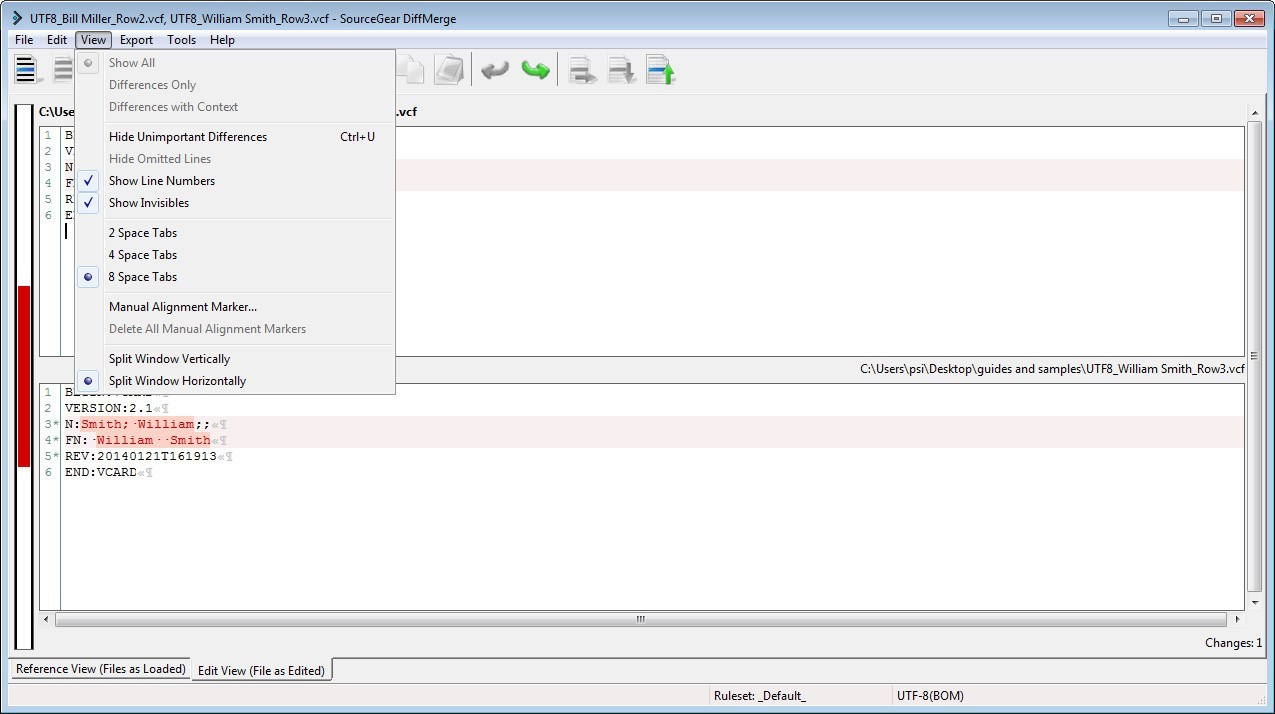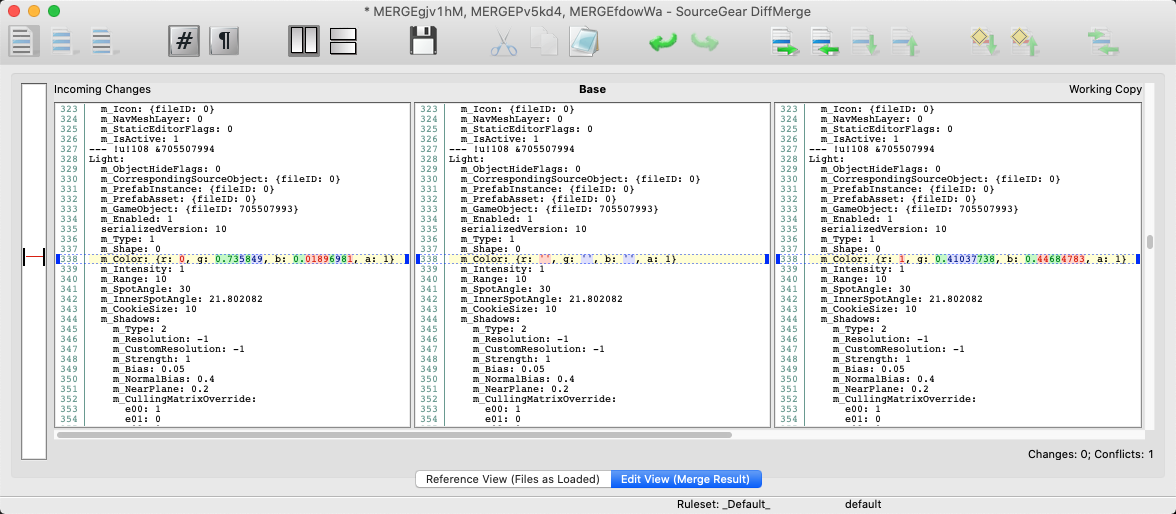

Many geometries can be constructed with what we already know.
Best diffmerge for unity youtuibe upgrade#
Unity is free, but you can upgrade to Unity Pro or Unity Plus subscriptions plans to get more functionality and training resources to power up your projects. With the same reasoning, it’s easy to see that taking the maximum value between two SDFs returns their intersection: The result can be seen in the following picture (which also features few other visual enhancements that will be discussed in the next post on Ambient Occlusion): This toy example can be extended to any two SDFs. Taking the minimum value between them returns another SDF which corresponds to their union: We don’t want to overshoot the sphere, so we must advance by the most conservative estimation. If there are two spheres, we should evaluate the distance from both and get the smallest. At each step, the ray must find its closest obstacle. We can think about this from the perspective of a camera rays, advancing into the material. And it is because they are amenable to composition. Given the SDFs of two different spheres, how can we merge them into a single SDF? There is another reason why SDFs are used.

The concept of signed distance function was briefly introduced in Raymarching tutorial, where it guided the advancement of the camera rays into the material. A negative distance indicates that we are inside the sphere, while zero is reserved for the points of the space which actually make up the surface. If sdf_sphere returns a positive distance, we’re not hitting the sphere.

We can change this function so that it returns the distance from the sphere surface instead:įloat sdf_sphere (float3 p, float3 c, float r) In the first post of this series, Volumetric Rendering, we’ve seen a hit function that indicates if we are inside a sphere or not: It takes a 3D point as a parameter, and returns a value that indicates how distant that point is to the object surface. Signed distance functions are based on the idea that every primitive object must be represented with a function. A sphere will always be smooth, regardless how close you are to its edges. You can scale up and zoom SDF geometries without ever losing detail. You can think of signed distance fields as the SVG equivalent of triangles. When you replace the geometry of a sphere with its very equation, you have suddenly removed any approximation error from your 3D engine. One of this uses signed distance functions, which are mathematical descriptions of the objects we want to represent.

Despite being the de-facto standard in computer graphics, there are objects which cannot be represented with triangles. Spheres, and all other curved geometries, are impossible to tessellate with flat entities. It is indeed true that we can approximate a sphere by covering its surface with lot of small triangles, but this comes at the cost of adding more primitives to draw.Īlternative ways to represent geometries exist. The way most modern 3D engines – such as Unity – handle geometries is by using triangles. Every objects, no matter how complex, must be composed of those primitive triangles.


 0 kommentar(er)
0 kommentar(er)
